Rustykalna ciabatta, domowe włoskie pszenne pieczywo. Nocna ciabatta, chrupiąca zewnątrz, miękka i z dużą ilością dziur w środku.
Ciabatta to rustykalne włoskie pieczywo wytwarzane z mąki, wody, oliwy z oliwek, soli i drożdży. Czy możemy powiedzieć, że ciabatta to łatwy i szybkie pieczywo? I tak, i nie. Najważniejsze to wyrobić sobie technikę, bo ciasto na ciabattę to mokra i lepka masa, nad którą trzeba zapanować.
Dlaczego nazywam tę ciabattę nocną? Ponieważ wyrabiam ciasto wieczorem i odstawiam przykryte na kuchennym blacie. Rano pozostaje mi tylko formowanie i wypiekanie.
Z tego przepisu najczęściej przygotowuję dwa podłużne bochenki. Nic jednak nie stoi na przeszkodzie, aby ciasto podzielić na 4 średnie lub 6 małych bułek.
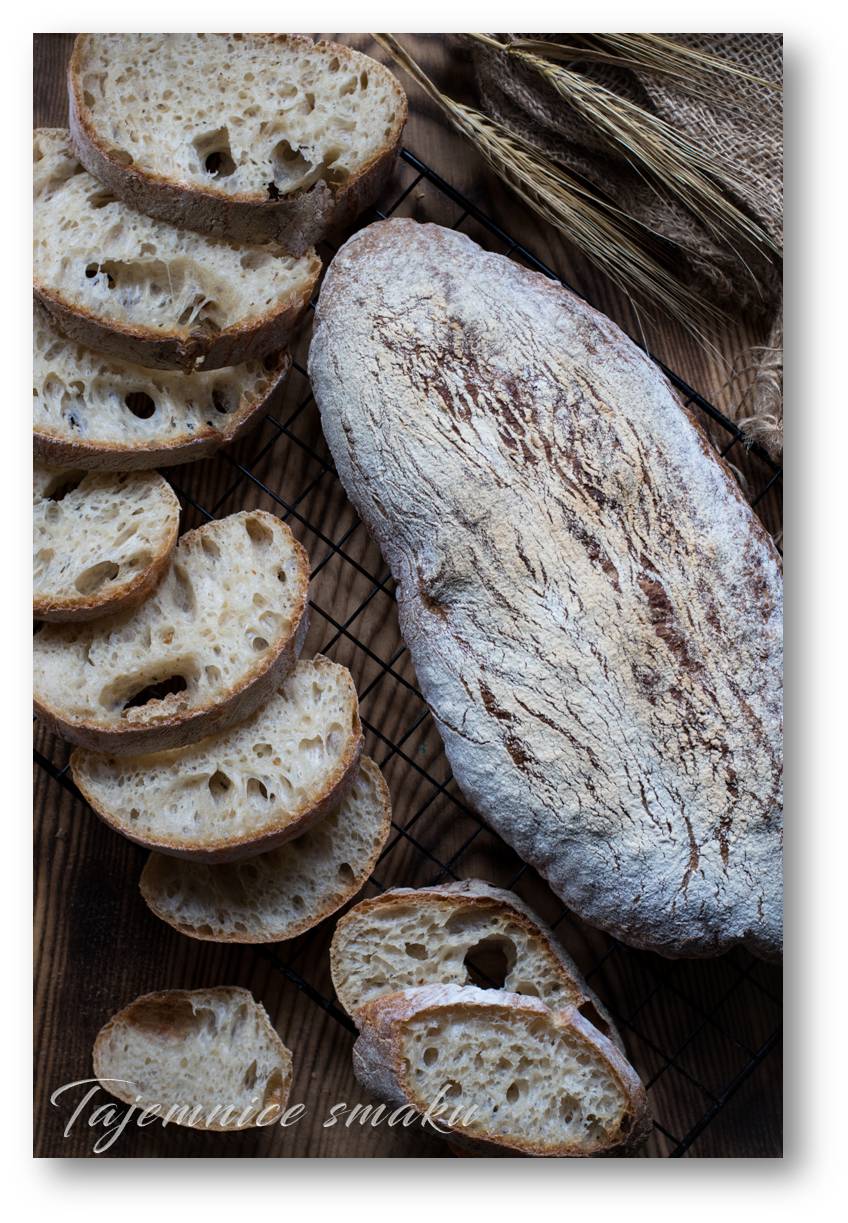
SKŁADNIKI
WYKONANIE
- Do miski wlewamy wodę, wkruszamy drożdże, mieszamy, aż drożdże się rozpuszczą.
- Dodajemy mąkę, mieszamy do połączenia, przykrywamy i odstawiamy na około 30 minut do autolizy. Jednym z celów autolizy jest nasycenie mąki wodą przed wyrabianiem ciasta.
- Następnie dodajemy do ciasta sól i zaczynamy wyrabiać.
- Ciasto jest bardzo wodniste i lepkie, więc najlepiej wyrabiać je z pomocą mikser z hakiem.
- Wyrabiamy tak długo, aż zacznie odklejać się od ścianek miski, trwa to zwykle około 3 - 5 minut.
- Następnie dolewamy łyżkę oliwy i ponownie wyrabiamy do czasu, aż ciasto wchłonie tłuszcz i będzie odchodzić od ścianek miski.
- Miskę z wyrobionym ciastem przykrywamy, najlepiej folią spożywczą i odstawiamy na kuchennym blacie na około 12 godzin.
- Polecam ciasto przygotować wieczorem i odstawić do wyrastania i fermentacji na noc.
- Po wyrośnięciu ciasto bardzo delikatnie, najlepiej zwilżonymi wodą dłońmi wykładamy na stolnicę obficie podsypaną mąką.
- Nie wyrabiamy ciasta, obchodzimy się z nim bardzo ostrożnie, aby nie zniszczyć pęcherzyków powietrza znajdujących się w środku.
- Ciasto posypujemy mąką po wierzchu i za pomocą skrobek (plastikowe lub metalowe łopatki do ciasta) lub noża dzielimy ciasto na 2, 4 lub 6 porcji.
- Każdą porcję lekko formujemy skrobkami, podsuwając mąkę ze stolnicy pod spód ciasta.
- Przykrywamy ściereczką i odstawiamy na 15 minut.
- Następnie, najlepiej za pomocą dwóch skrobek przekładamy ciabatty "do góry nogami" na papier do pieczenia podsypany mąką.
- Układamy bułki w odstępach, przykrywamy ściereczką i odstawiamy jeszcze 20 minut.
- W tym czasie nagrzewamy piekarnik z blachą w środku do 245°C.
- Na spodzie piekarnika ustawiamy żaroodporną miseczkę z wodą.
- Ciabatty zsuwamy (razem z papierem do pieczenia) na nagrzaną blachę i pieczemy przez około 20 - 25 minut.
- Po upieczeniu studzimy na kratce.
PORADY I WSKAZÓWKI - FAQ
- Do formowania ciabatty polecam plastikowe lub metalowe skrobki do ciasta, są bardzo przydatne. Jedną z trudności może okazać się również transport wyrośniętego ciasta na rozgrzaną blachę. Jak sprawnie zsunąć ciabatty na gorącą blachę? Możecie wykorzystać inną, płaską blachę lub łopatę do pizzy. Możecie również, tak jak ja poprosić męża o specjalna deseczkę. Jest to wycięty kawałek sklejki (8 mm grubości, z drzewa liściastego) o wymiarach 38 x 38 cm, sprawdza się idealnie, polecam.
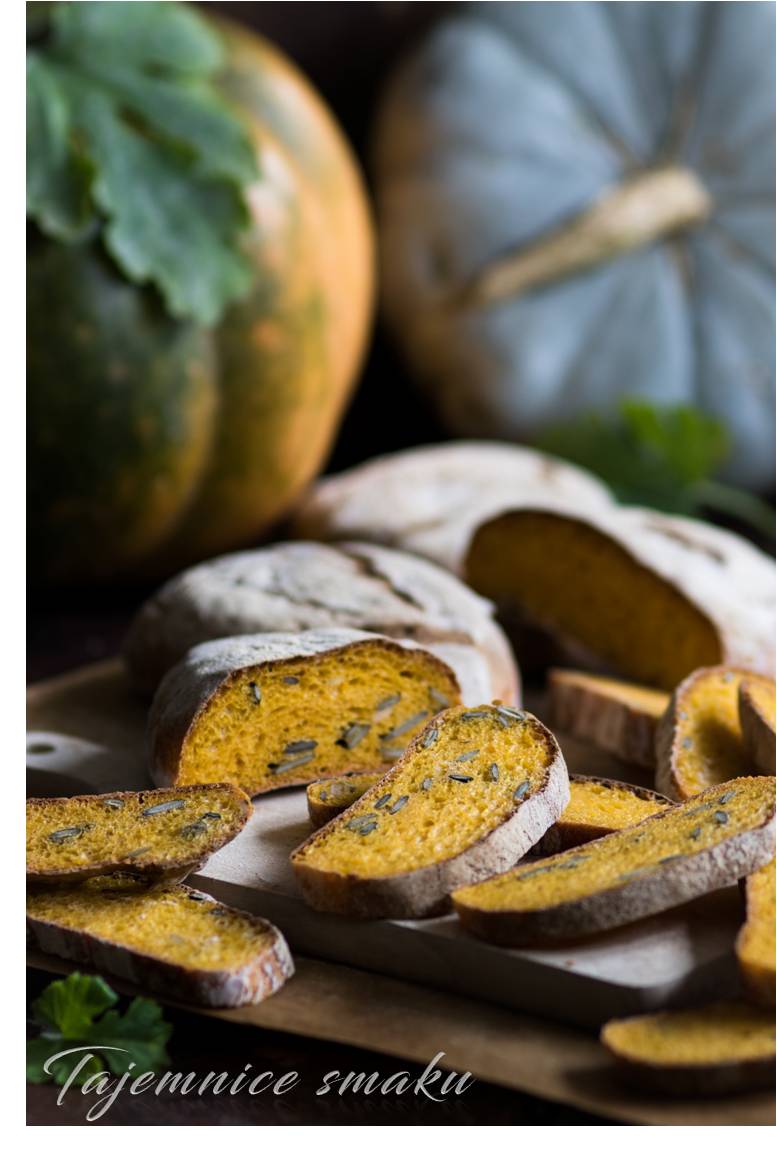
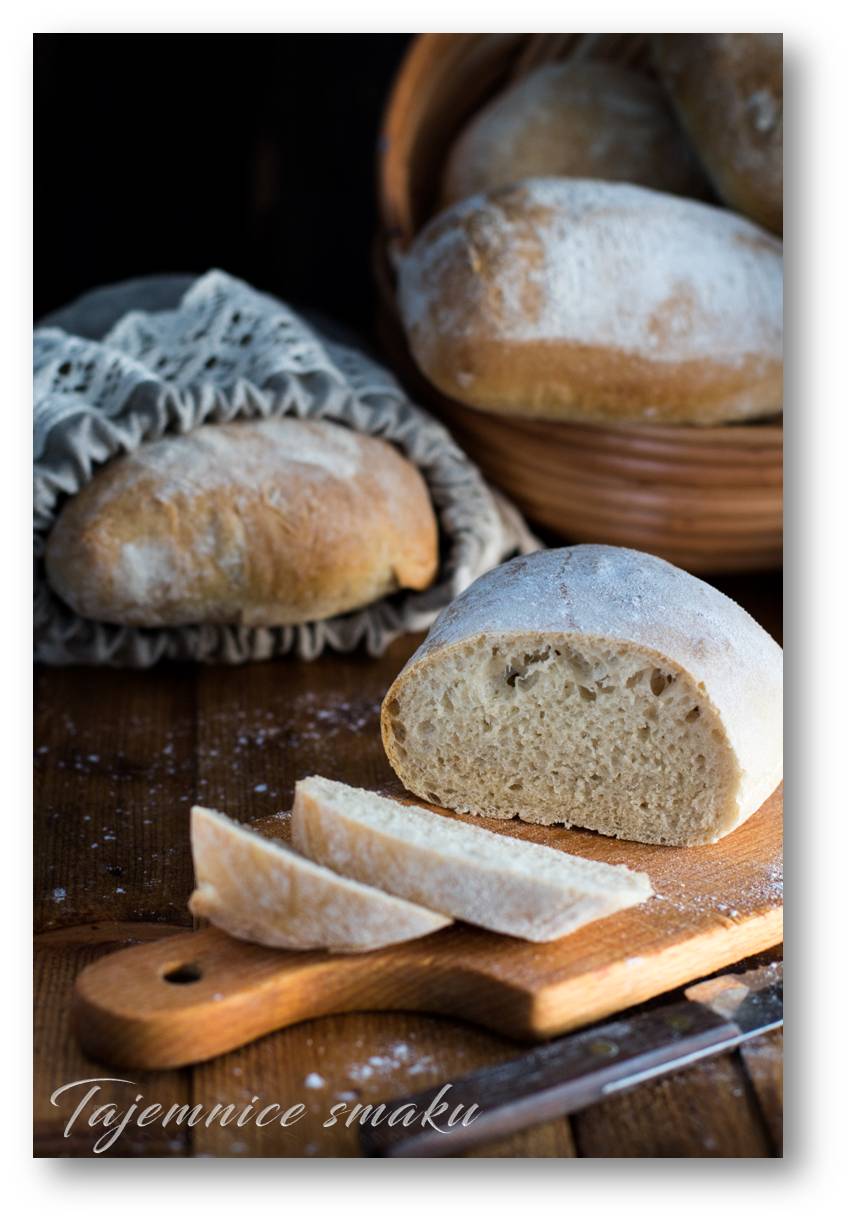
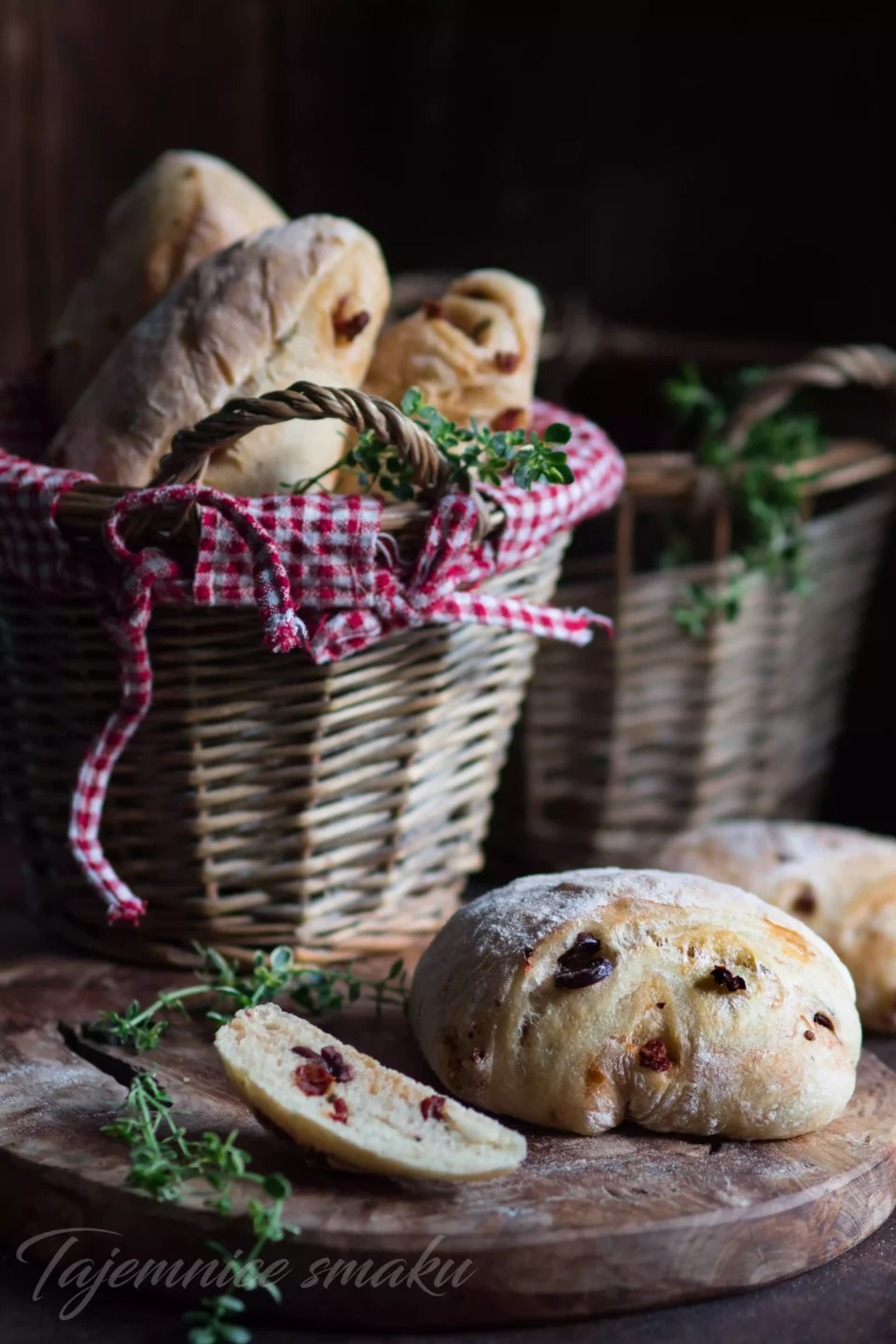
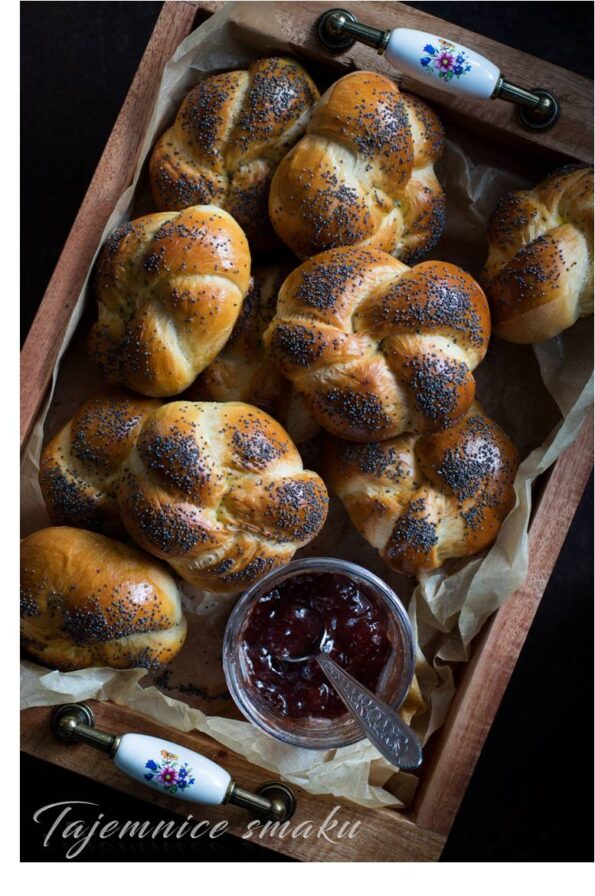


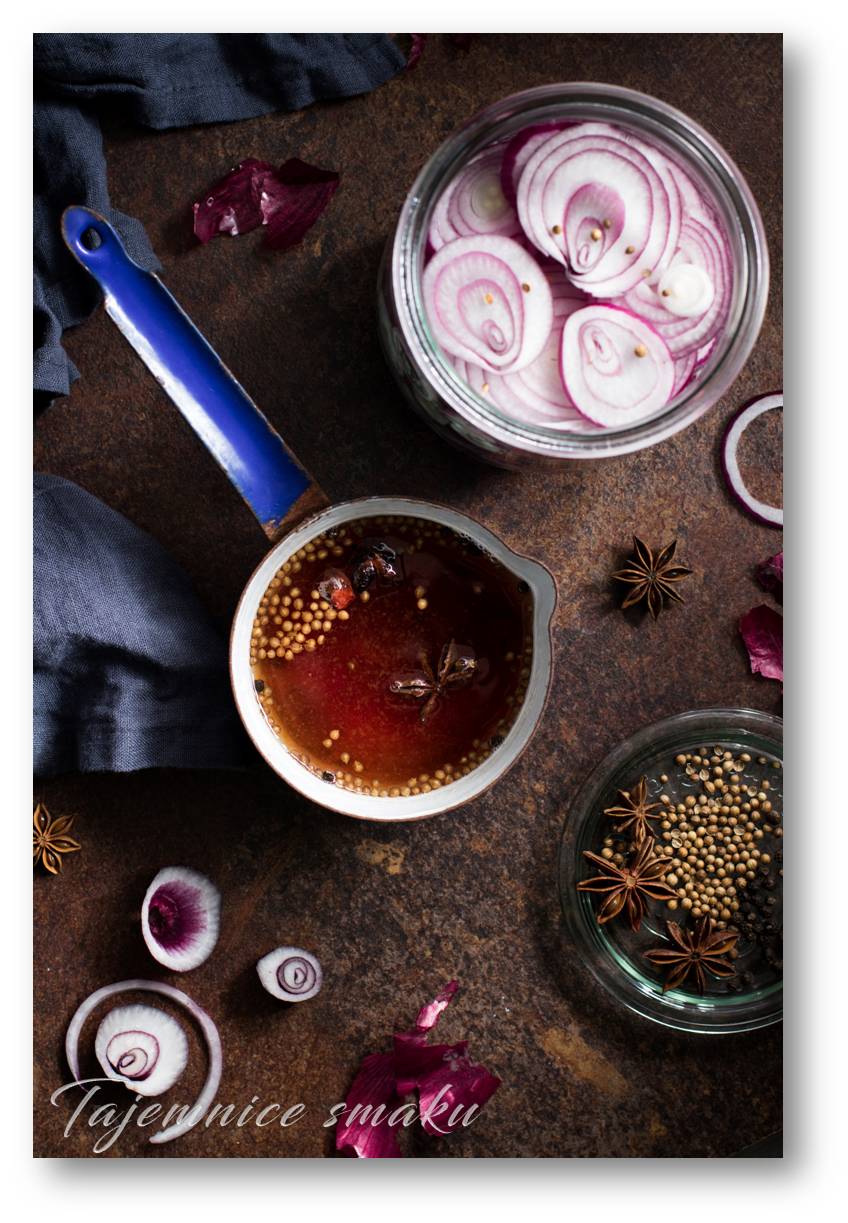
Dodaj komentarz
Twój adres e-mail nie zostanie opublikowany
Możesz się zalogować, aby automatycznie wypełnić dane.